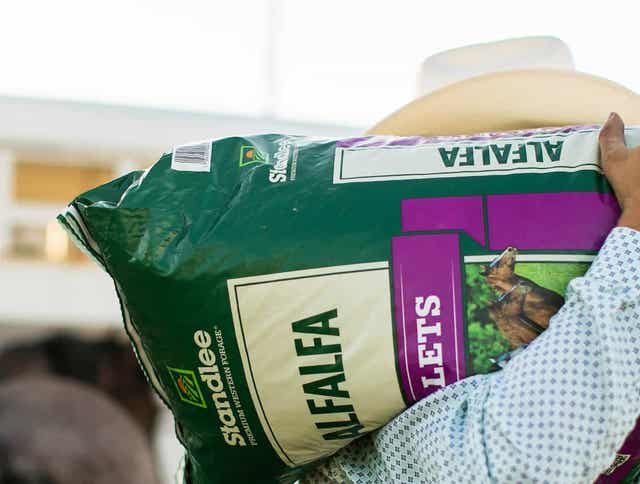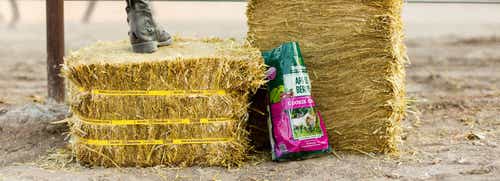
Counting Calories - Getting the Energy Content Right in Horse Diets
Understanding the energy or calorie content of your horses’ diet can be confusing. Horse owners certainly want their animals to have adequate energy, but not too much energy that may cause erratic behavior. A better understanding of energy requirements for horses will help bring clarity to this topic.
Energy is necessary to run all the chemical reactions within the horse. These chemical reactions allow the horse to do normal things such as eat, drink, stand, walk, trot, canter, and gallop. Energy is also the fuel that allows the horse to perform athletic maneuvers such as jumping, spinning, racing, and all the other things we ask our horses to do. Energy is derived from feed such as forage (pasture/hay), grain, and even supplements. The energy content of a given feed ingredient is measured or expressed as calorie content, the more energy in an ingredient the higher the calorie content of that ingredient.
What makes different feeds have different calorie content? It is the amount of, and the digestibility of, carbohydrate, fat, and protein within an ingredient that dictates calorie content. Similar to human nutrition, we can understand that different things we eat will have different effects on our waistline. The same is true in horse nutrition; different ingredients will provide different amounts of calories.
Let’s rank the feeds that horses normally consume by their calorie content. The lowest calorie ingredients are forages (pasture and hay).
- Forages are rich in structural carbohydrate (fiber) that is fermented within the horses’ digestive system. Fiber digestion is not very efficient so as forage matures from short grass, such as on your lawn, to very tall mature forage the amount of fiber increases and the calorie content decreases.
- Short pasture grass would have the highest calorie content, followed by hay cut at an early stage of maturity. Very tall, mature hay would contain the fewest calories. The variety of hay also dictates calorie content since the amount of fiber will vary.
- In general, the highest calorie hay is alfalfa with grass hay varieties such as timothy and orchard grass having lower calorie content.
- Grains, such as oats, corn, and barley contain more calories than forage. The energy is grain is derived mostly from simple carbohydrates such as sugars and starch that are abundant in grains. These carbohydrates are digested very efficiently and provide abundant calories for the horse.
- Within the grain varieties, corn typically has the highest calorie content followed by barley and oats.
- Finally, the highest calorie ingredient that can be provided to a horse is vegetable oil, such as canola oil. Horses are very efficient at digesting the fat in vegetable oil. The high-calorie content of vegetable oil makes it a popular additive in performance feeds and feeds designed to help horses gain weight.
The final question is: How do you get the calorie content of your horse’s diet right? Fortunately, the calorie content of the diet is the only nutrition factor that you can look at your horse and judge if you are getting it right. If you are feeding your horse too many calories, they gain weight and get fat. You can visually see that. If you’re not feeding enough calories the horse will become thin. If your horse is fat or thin, ultimately you can make diet and exercise adjustments to correct the situation. (On the other hand, it is difficult to look at a horse and determine if they are selenium puny or copper challenged until a massive deficiency exists.) Start your horse’s diet with essential forage, selecting the forage with a calorie content that fits their needs. Add grain and vegetable oil as the calorie requirements increase to perform athletic events. Frequently evaluate your horse to monitor weight gain and weight loss to ensure you’re getting the energy content of the diet right.
By Dr. Stephen Duren
Standlee Nutritional Expert - Performance Horse Nutrition










